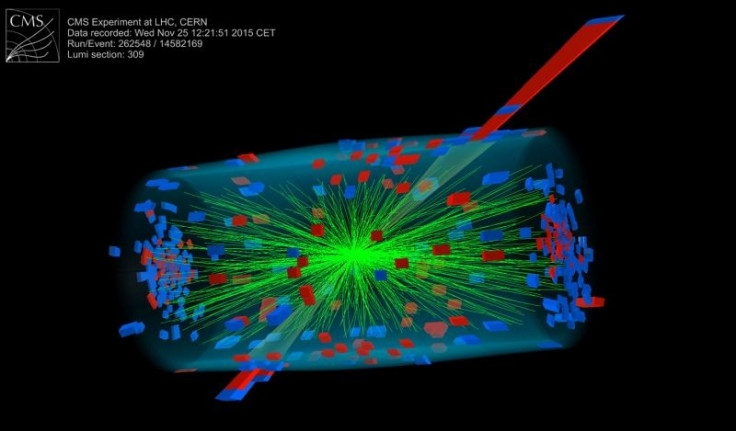CERN Update: Scientists Begin ‘LHC-Forward’ Experiment To Investigate Cosmic Rays

Our planet is continuously bombarded by a stream of high-energy subatomic particles from outer space. These particles, which make up cosmic rays, collide with the nuclei of atoms in Earth’s upper atmosphere, generating showers of up to 10 billion “secondary” particles — pions and muons.
In order to understand nature of cosmic rays, scientists at the European Organization for Nuclear Research (CERN) have now begun the LHC-forward (LHCf) experiment — the smallest of the six official Large Hadron Collider experiments. Unlike the other LHC experiments, LHCf is designed to detect and measure the particle collision debris thrown only in the “very forward” direction — a phenomenon that mimics, to a certain extent, the shower of particles created by cosmic rays’ interaction with Earth’s atmosphere.
“The idea behind the LHCf experiment is to help increase our learning about the nature of high-energy cosmic rays, by measuring and interpreting the properties of the secondary particles released when these cosmic rays collide with the Earth’s atmosphere,” Lorenzo Bonechi, who leads a team for the LHCf collaboration in Florence, Italy, said in a statement released Friday.
Over the past years, LHCf detectors have been installed along the accelerator’s collision points several times. This year, only one detector has been installed, which would now collect data from the ongoing lead ion-proton collisions.
The researchers hope that comparing the data gathered from these collisions with the predictions made by their current theoretical models would provide vital clues to not only the nature of cosmic rays, but also to their interaction with other hadronic particles.
“Over previous runs we’ve found significant discrepancies between our data and the most advanced hadronic interaction models, which are used to model how cosmic rays shower down onto the Earth when they interact with our atmosphere,” Bonechi said. “LHCf is trying to find evidence that could help prove which of these models provide the most reliable description. Now, scientists working in this field are making an effort to integrate our results into their models, and we might see a revolution in them in the near future.”
© Copyright IBTimes 2024. All rights reserved.












